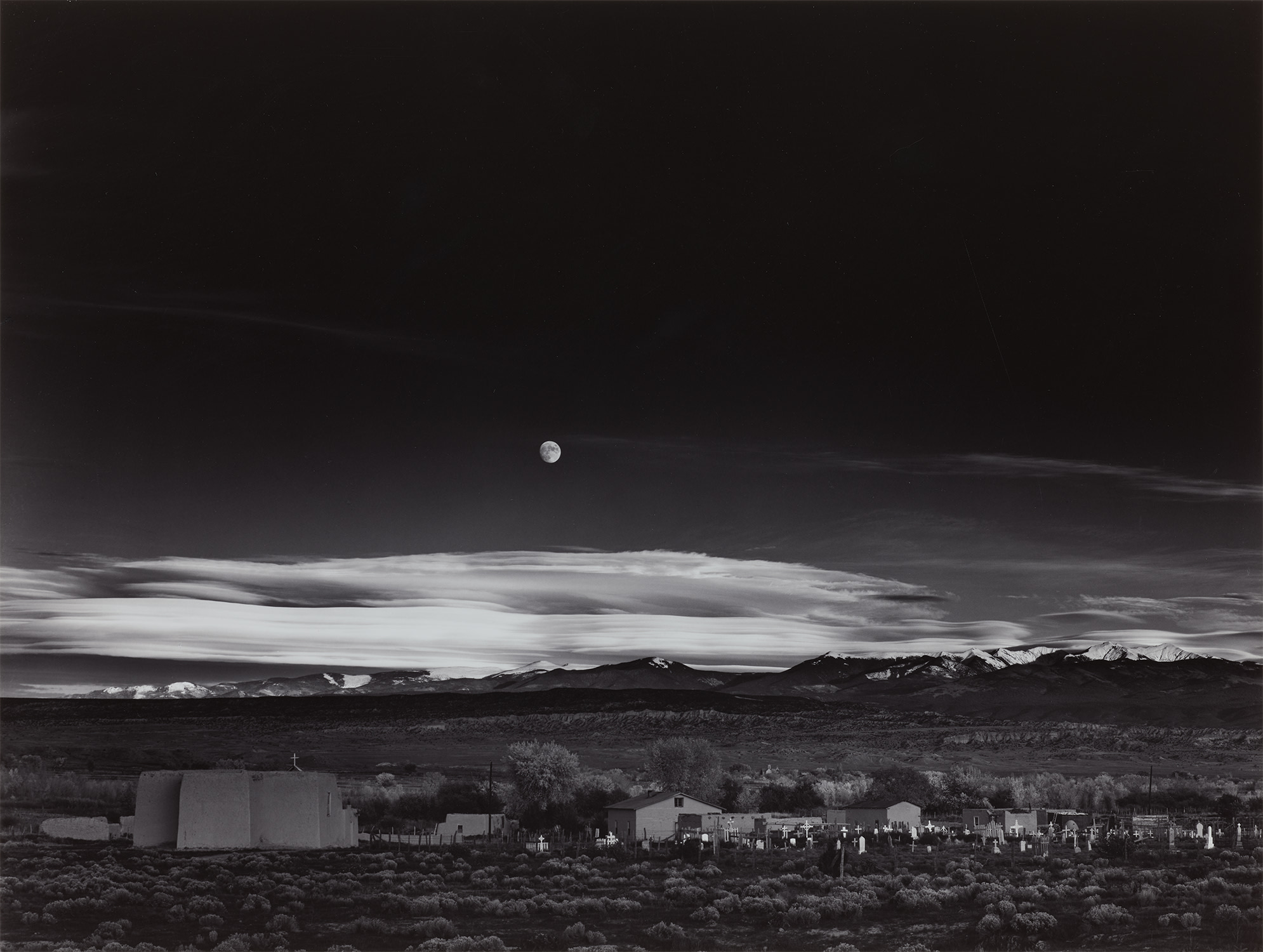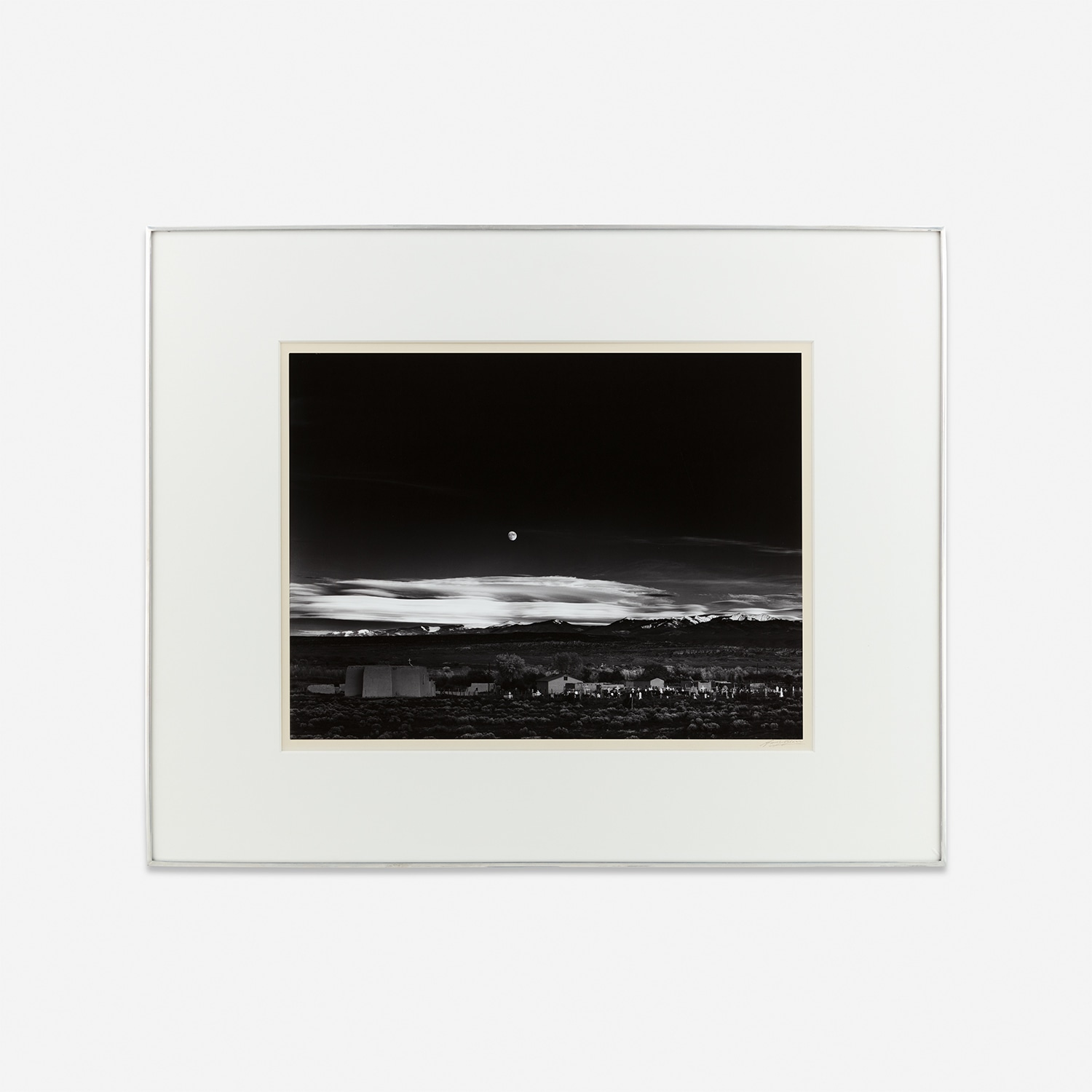



Property of the Amon Carter Museum of American Art Sold to Benefit Acquisitions Funds
168
Ansel Adams
Moonrise, Hernandez, New Mexico
1941
Gelatin silver print, probably printed late 1950s or early 1960s.
19 3/8 x 25 3/4 in. (49.2 x 65.4 cm)
Signed in ink on the mount; Carmel credit and printing information stamps (BMFA stamps 7 and 8), 'Garick Fine Arts, Inc., c/o 1811 Pine Street, Phila., Pa., 19103' stamp, and titled in an unidentified hand in ink on the reverse of the mount.